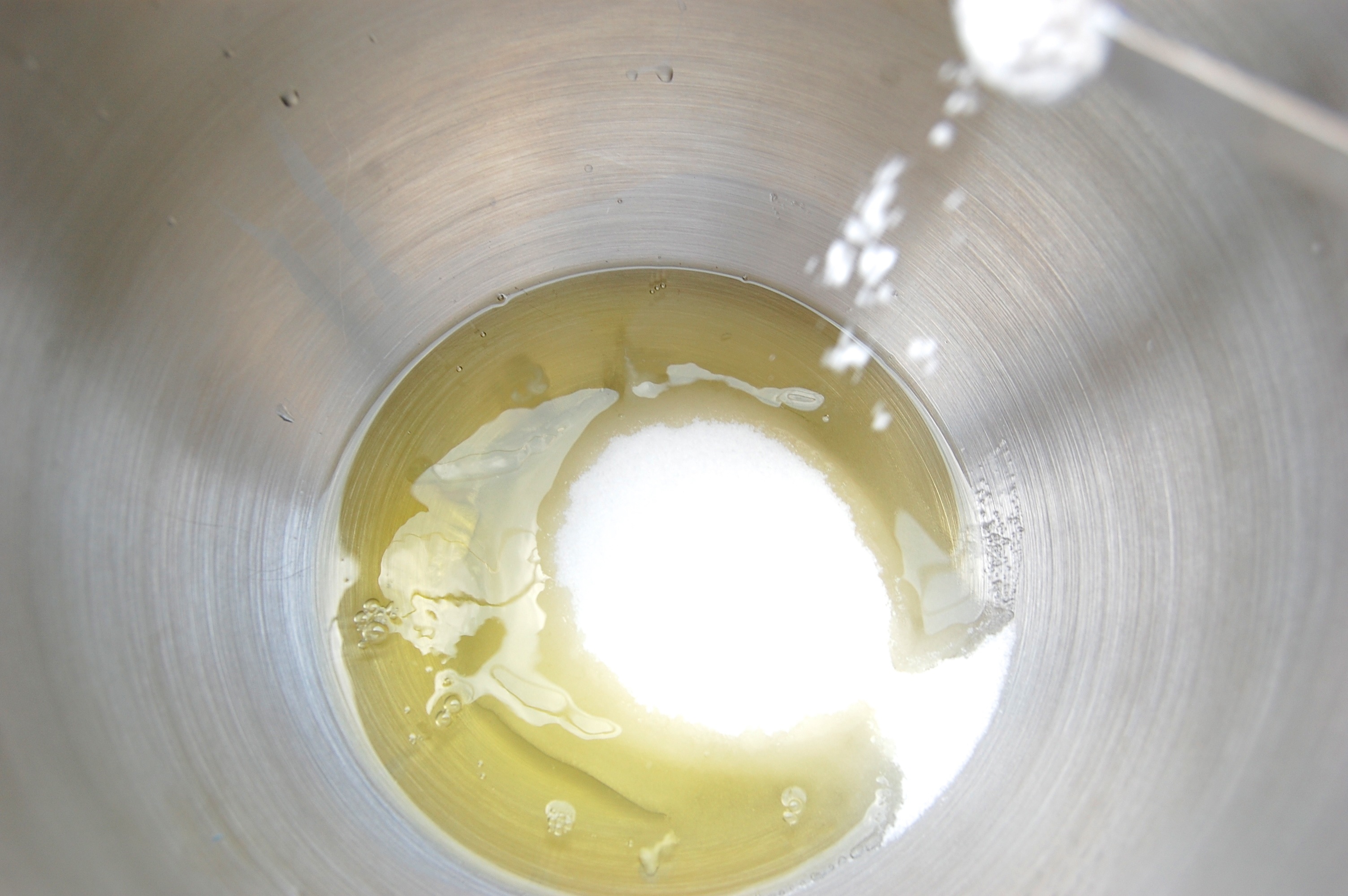Making Swiss Meringue
Swiss meringue is a thick, marshmallow-like confection that can be baked in shapes, used as a base for buttercream, it even makes a handy dessert topping. It holds well, pipes beautifully and since it’s pre-heated before it’s even whipped, carries little (if any) risk of food borne illness. Did I mention it’s really, really easy to make too?
One of the basic rules of meringues is that the earlier you add the sugar the denser and more stable the meringue will be. With Swiss meringue the sugar is combined with the egg whites in the very first step, so you can draw your own conclusions. A basic recipe is:
4 egg whites
7 ounces (1 cup) sugar
1/4 teaspoon cream of tartar
Set a medium saucepan with 1 inch of water on the boil. Meanwhile, place your whites, sugar and cream of tartar in the bowl of your mixer.

Whisk all that together, then put the mixer bowl into/on the saucepan, making a sort of improvised double boiler (make sure it’s stable, K?).

Now all you’re going to do is whisk all that gently until it reaches 160 degrees Fahrenheit. That’s not especially hot and it won’t take long. I personally like to whisk gently with one hand while I hold a instant-read thermometer in the mixture with the other. But don’t do this if, you know, you think you might tip everything on top of yourself. Even the best meringue isn’t worth a scalded crotch, knowadimean?
What’s so special about 160 degrees Fahrenheit? It’s the temperature at which salmonella (and many other kinds of bacteria) are killed. Some of you who’ve been reading the blog for a while may remember that egg white proteins start to curdle at 140 degrees Fahrenheit, and might be wondering what’s keeping them from cooking here. The answer is it’s the sugar, which is not only absorbing heat, it’s getting between the proteins and helping to keep them from clumping.

Once the magic number is reached, just put the bowl on the mixer, attach the whip and whip the whole thing up to stiff peaks. It’ll take a little longer than other meringues, and again that’s because of all the sugar. Bubbles are slow to form in this sweet mixture and when they do are very small, so be patient. It’ll take a good 5-8 minutes of whipping on high. Done!

THIS I’d prefer on the lemon meringue pie. Just saying… 🙂 Looks great and versatile too! Is that going on the mud cake?
As they say up in my one-time home of Minnesota: you betcha!
And to each their own!
😉
Ya, for sure! Lived there for 17 years!!
Hello again, Joe Pastry!
Since you brought up Swiss meringue…Two weeks ago I made a half-sheet cake with your high ratio chocolate recipe and although sugar is my favorite food the three-pounds-of-powdered-sugar frosting grossed me out and did no justice to the cake. I entertained myself last weekend reading your series on buttercreams and one commenter said she used two pounds of butter, not three, for a triple batch of Italian meringue buttercream. I’ve frosted cakes with Swiss and Italian meringue without adding butter. It was good but very short-lived. By how much dare I reduce the butter in Swiss meringue buttercream and still have a more stable frosting?
Perhaps you will write about other frosings in the meringue family such as boiled, white mountain and seven minute and how the incremental differences in the temperature of the sugar syrup affect the frosting.
Hey LML!
There are recipes for several of those in the components menu under “Icings and Frostings” if you’re curious. But yes, no fat with the meringue will give you something like a seven-minute frosting: smooth at first and crumbly later. My suggestion would be to cut the fat in half and see how it holds up. And of course get back to me with the results!
Cheers,
– Joe
I convinced my beloved we needed a stand mixer because she burnt out our handheld trying to make Italian meringue for divinity. She loves the stuff. I have never made Swiss but imagine it might eat a cheap hand model too. How stiff can you make it?
Hey Frankly!
You can make it plenty stiff…enough for divinity I’d think. It has less sugar than Italian so it might not bake up quite as well, but it’s certainly work a try!
– Joe
Can I leave out the cream of tartar? Can i substitute it with something else? I don’t know where to find it locally and want to make Swiss meringue for the top of my mud cake…. Thanks.
Yes you certainly can leave it out. It’s there just as a little extra insurance against over-whipping. You can use a little lemon juice if you like as a substitute, but it’s not essential.
Have fun!
– Joe
Thanks 🙂 it worked, extremely messy but it stilled worked!
It does indeed get a little messy at times. Glad you powered through the mess to victory, Lemon!
Cheers,
– Joe
“Heat the oven to 200C. Spread the sugar over an oven tray lined with baking parchment and bake until it has just begun to melt at the edges, but not caramelised (about 8 minutes).” What kind of meringue is this as it does not seem to be French, Italian or Swiss? Btw the meringues produced by this method are excellent.
Cheers
Soupcon
Hey Soupçon!
It’s a variation on a Swiss meringue, or at least that’s the way I think of it. 😉
Glad it worked so well for you!
Cheers,
– Joe